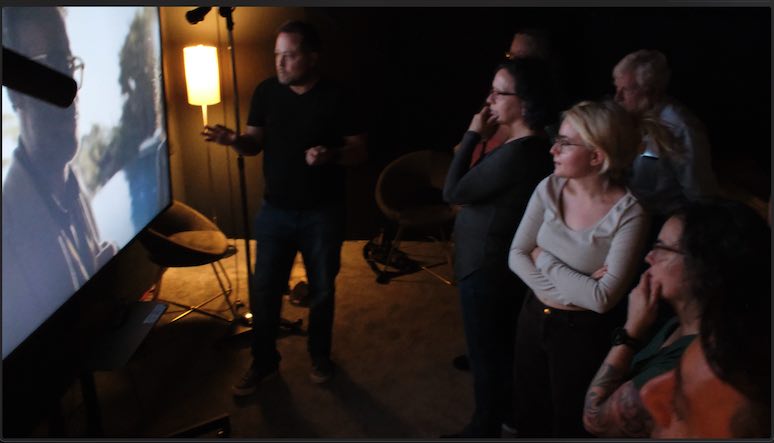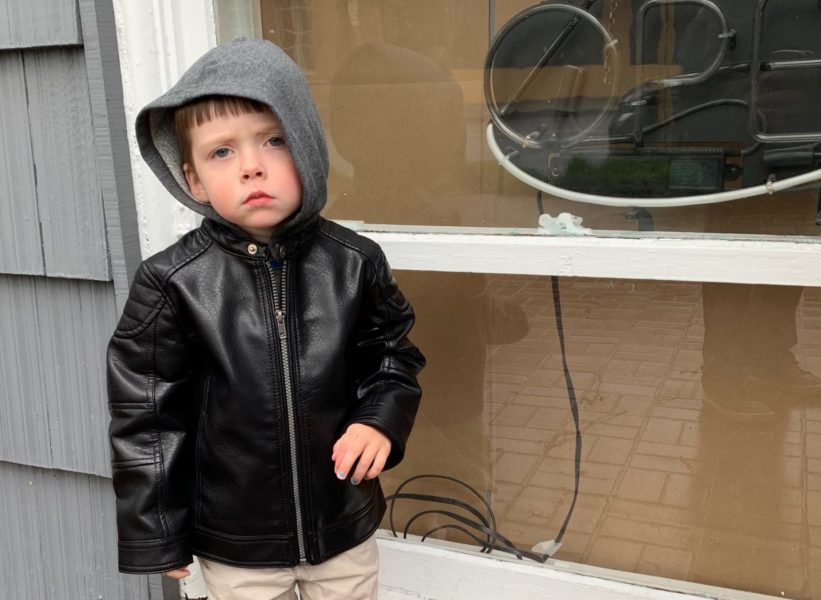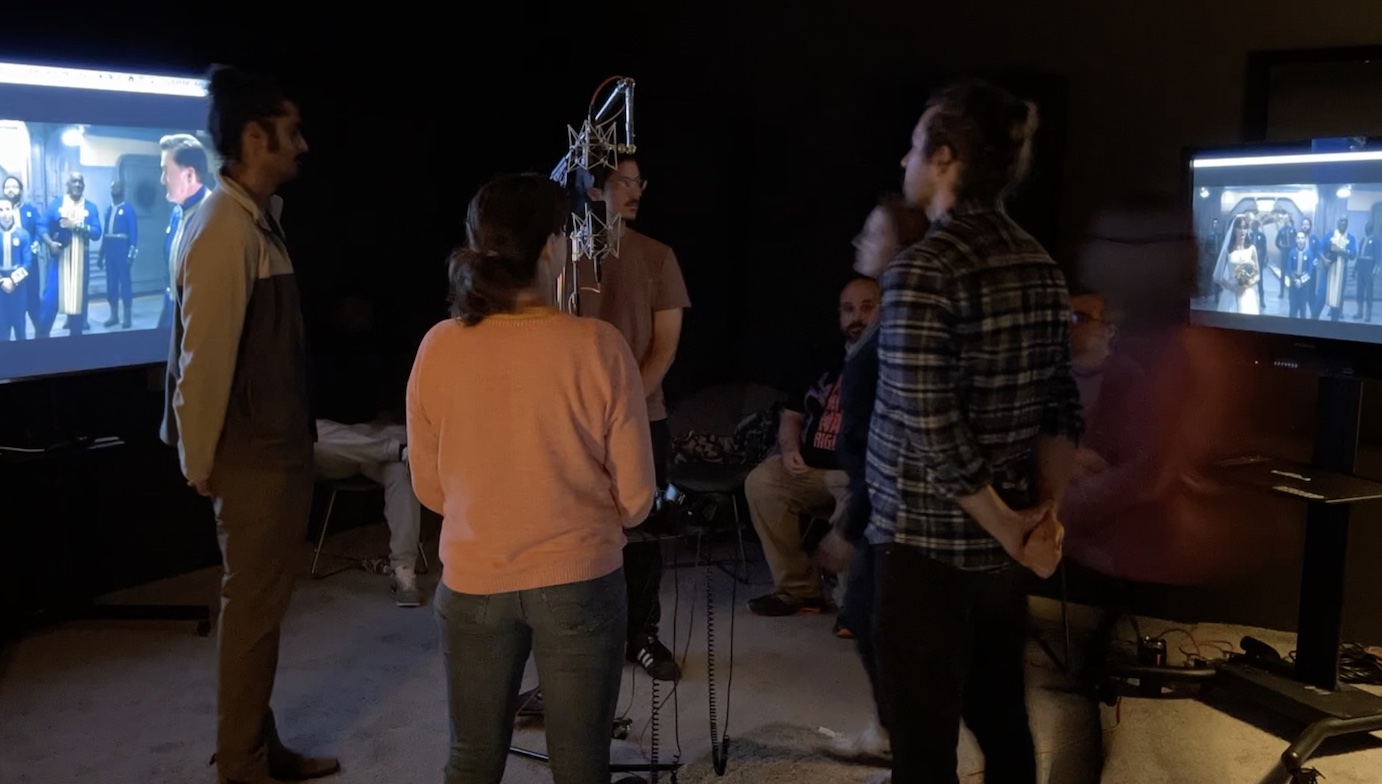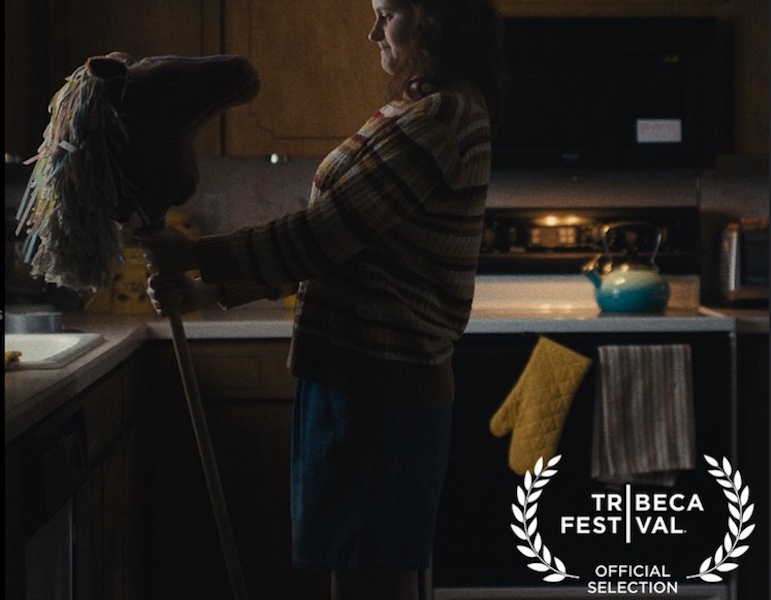[Disclaimer: we did NOT work on this project, the video only shows one of our training sessions. If you haven’t seen Apple TV’s “The Studio” yet, what’s wrong with you? It’s amazing. And the loop group who did work on the show did a phenomenal job. Thanks for letting us experiment with this episode.]
I_love_efficiency.
That feeling of briskly moving forward, while still executing with quality, is hard to beat. And why break the grove or slow the pace if everything is flowing, right? On the other hand, having pure focus on a single task can offer better accuracy and a reassurance that cues have been properly covered. No need to go back and double check.
A looping session has to cover both longer and super-short one-word cues, but I confess I lean toward the “let’s do multiple cues in one pass” camp. So after witnessing the genius in episode 2 of Apple TV’s “The Studio” aka: “The Oner,” I wondered if Rebeloop could also cover all the specifics, walla and efforts needed in just one pass? And even if we could do it, would the results be any good?
We decided to fuck around and find out for our upcoming May workout.
The plan:
– all 14 loopers to watch the episode no less than two times on their own
– everyone research what an A-List film set would really sound like
– assign loopers to cover specific filmset crew members
– while in-studio, go bit-by-bit thru the episode to figure out specifics and choreograph the scene from our end
– loop a few minutest to test, review, test again, and move forward when ready
The session:
30-minute warm up, followed by 1.5 hours of review and testing bit by bit, ending the night with two full 30min passes. The video is from our second take.
We used a L/R mic setup with the screen in-between. Most of the outdoor crew were assigned to the Left mic area, indoor crew was Right side. Callouts, and cross screen movements were done as needed.
Side note for the audiophiles: This is just our workout space so we know this untreated room makes for unusable audio in a real-world session, but hey at least we have room for these nutty experiments.
Everyone was exhausted by the end of the second take, but also elated by the accomplishment.
The results:
+ the voices we added did seem to flow with the events in the episode
+ the loopers were able to keep conversations and dialog moving forward in a more natural manner
+ entire session would have been completed in under two hours in-studio if rehearsals were done prior to the session on the loopers’ own time (something Rebeloop does do)
– the amount of research and rehearsal for the loopers pre-session is… well… a lot
– we likely missed some specifics and would have had some pickups anyway
– correcting anything after getting notes might be a tedious edit for the post house afterward
The conclusion:
A fun experiment to say the least, and after listening to the two takes, the group ADR felt natural and connected to my ears. Given the episode was also done in one take this technique might have actually worked. One of those rare instances where covering all the cues could have been done with (say it with me) efficiency.
But practical on other projects? Absolutely not. I still chuckle at the thought of fight effort cues going while a doughnut circles around them. Not sure insurance would cover that.
My love of efficiency remains intact. Who doesn’t want a quick’ish, high-quality group ADR session? So yeah… Rebeloop will always be looking for ways to cover multiple cues, but… you know… when appropriate and possible.
-Mike Vaughn,
Rebeloop Group Coordinator







